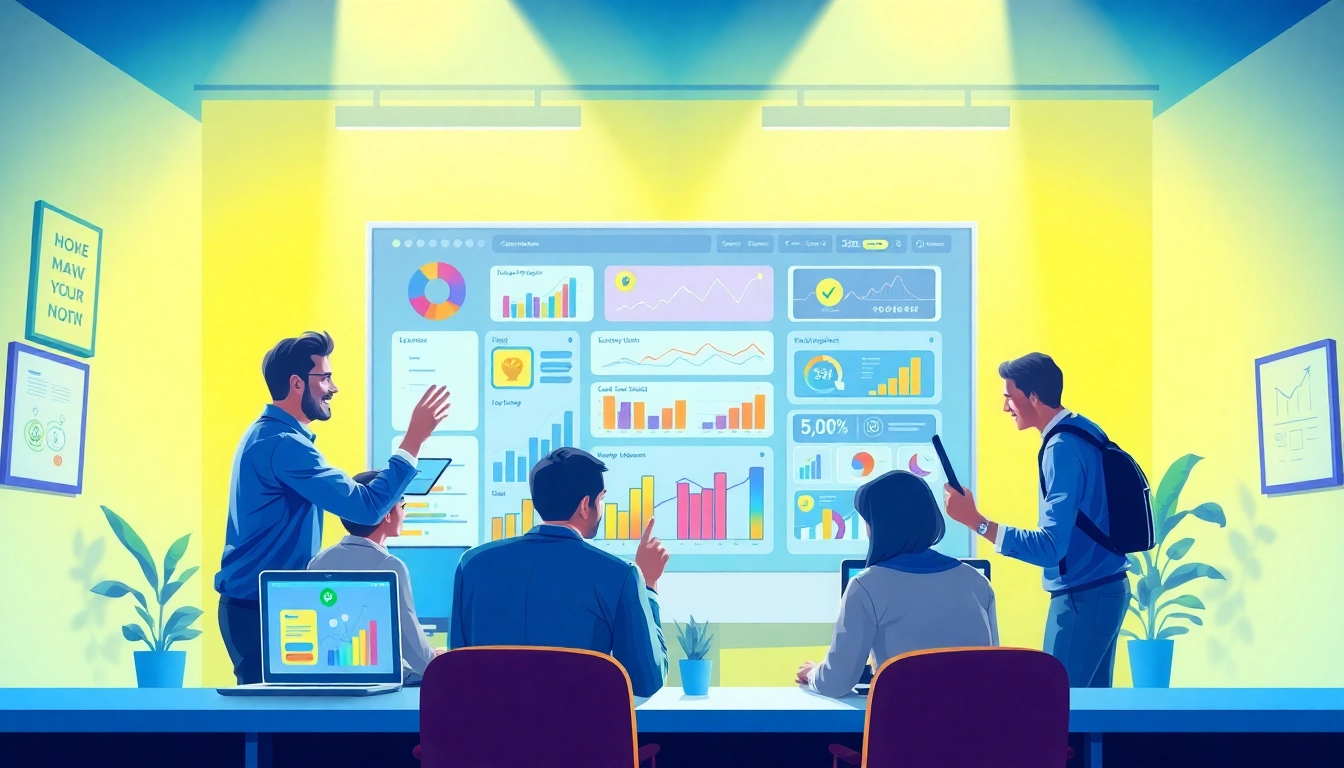Understanding Business Gamification
What is Business Gamification?
Business gamification refers to the integration of game-like elements and principles into non-game contexts, specifically within a business environment. This approach leverages aspects such as points, badges, leaderboards, and rewards to enhance user engagement, drive motivation, and provide feedback. By using these mechanics, organizations can encourage employee participation in various activities, from training programs to customer engagement initiatives. The effectiveness of business gamification lies in its ability to make monotonous tasks more enjoyable and rewarding.
Benefits of Implementing Gamification in Business
Implementing gamification strategies in business can lead to numerous benefits:
- Increased Engagement: By introducing game elements, employees and customers alike show higher engagement levels. This can translate into better attendance at training sessions and usage of platforms.
- Higher Retention Rates: Gamification helps in retaining customers and employees by providing ongoing motivation and recognition. Users are less likely to leave when they feel rewarded and acknowledged for their efforts.
- Enhanced Productivity: Gamification can boost productivity as employees strive to earn rewards or achieve leaderboard rankings. This competition drives them to work more efficiently.
- Improved Learning and Retention: In educational or training contexts, gamified techniques can enhance learning experiences, leading to better retention of information and skills.
- Behavioral Change: By encouraging specific actions through rewards or points, businesses can effectively influence positive behavioral changes in both employees and customers.
Common Myths and Misconceptions
Despite its advantages, several myths surround gamification:
- Gamification is just for fun: While gamification can make tasks enjoyable, its primary purpose is to drive engagement and achieve specific business objectives.
- Only for Millennials and Gen Z: Gamification can appeal to all age groups. Many employees of different generations appreciate recognition and rewards.
- It’s a fad: Gamification is a lasting technique that has shown measurable results across various industries, making it more than just a temporary trend.
Key Elements of Gamification in Business
Game Mechanics that Drive Engagement
The backbone of gamification lies in its game mechanics. Key components include:
- Points: Users earn points for completing tasks, which can increase motivation and metrics for success.
- Badges: Visual representations of achievements encourage users to strive for specific goals.
- Leaderboards: These foster competition, motivating users to improve their performance relative to others.
- Challenges and Levels: By breaking down tasks into challenges, users experience a sense of progression, making it more appealing to engage.
The Role of Rewards in Gamification
Rewards are pivotal in ensuring the effectiveness of gamification strategies. They can be tangible, like prizes or discounts, or intangible, such as recognition or a sense of accomplishment. The right type of reward resonates with the audience and aligns with the goals of gamification:
- Intrinsic Rewards: These are internal rewards, such as personal satisfaction and mastery of a skill. They can be more powerful than external rewards.
- Extrinsic Rewards: External incentives like gift cards or bonuses can be effective, especially in competitive settings.
Feedback Loops and Their Importance
Feedback loops play a critical role in gamification. Regular feedback can help users adjust their behaviors and improve performance. This can be facilitated through:
- Immediate Feedback: Real-time feedback on performance keeps users engaged and helps them make on-the-spot improvements.
- Periodic Feedback: Weekly or monthly reviews can provide insights and areas for improvement.
Challenges in Implementing Business Gamification
Understanding Your Audience
One of the greatest challenges in gamification is understanding your audience thoroughly. Harmonizing game mechanics with the preferences and motivations of different segments is crucial. Conducting audience research, surveys, and user testing are effective ways to gather insights that can tailor the gamified experience.
Overcoming Resistance to Change
Resistance among employees or customers can hinder successful implementation. To overcome this challenge:
- Address concerns by clearly communicating the benefits of gamification.
- Involve key stakeholders in the design process, making them advocates for the initiative.
Technical Barriers and Solutions
Implementing gamification may also encounter technical challenges. Organizations should ensure they have the right technology and infrastructure, which may involve investing in software or training staff to use new tools effectively. Regular updates and maintenance are critical to avoid disruption of services.
Case Studies: Successful Business Gamification Examples
Leading Companies Using Gamification
Several companies have successfully implemented gamification strategies, leading to impressive results:
- Nike: The Nike Run Club app uses gamification by tracking runs, allowing users to set goals, and earn badges, significantly boosting user motivation and engagement.
- Starbucks: Their loyalty program offers rewards based on points collected through purchases, leading to increased customer retention.
- Deloitte: Deloitte’s leadership training program employs gamification to engage employees in learning activities and improve retention rates.
Innovative Examples Across Industries
From healthcare to education, innovative gamification examples abound:
- Duolingo: This language-learning app uses points, levels, and reminders to keep users engaged and learning regularly.
- Fitbit: Gamifies health tracking by allowing users to earn badges for steps taken, motivating physical activity.
Lessons Learned from Failures
Not all gamification attempts are successful. Organizations have learned valuable lessons from failures:
- Misalignment of rewards with user motivation can lead to disengagement. It’s vital to understand what truly motivates your audience.
- Pushing too hard for competition can discourage collaboration and lead to negative outcomes.
Measuring the Impact of Gamification on Business
Key Performance Indicators to Track
To gauge the effectiveness of gamification, organizations should monitor several key performance indicators (KPIs):
- User Engagement Levels: Tracking participation rates and time spent on gamified platforms.
- Task Completion Rates: Measuring how many participants complete the tasks or challenges presented.
- Retention Rates: Observing whether gamification initiatives help retain employees or customers longer than traditional methods.
Feedback and Continuous Improvement
Continuous feedback mechanisms are essential for refining gamification strategies. Collecting data regularly, assessing user experiences, and adjusting strategies based on feedback can enhance the effectiveness of gamified initiatives.
Future Trends in Business Gamification
The future of gamification in business is bright, with several emerging trends:
- Increased Personalization: Tailoring gamified experiences to individual user preferences will become more prominent.
- Integration with AI: Leveraging artificial intelligence to create adaptive gamification experiences that evolve with user behavior.
- Focus on Social Engagement: Encouraging social elements in gamification to enhance collaboration and community-building.



